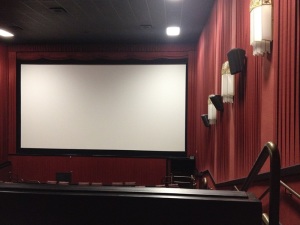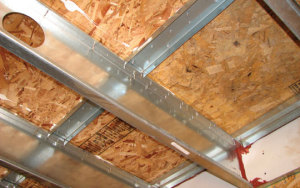By David R. Taylor, P.E.
February 2015

In 1904, the Iroquois Theater in Chicago had a devastating fire which was the deadliest theater fire in United States history. Its aftermath caused code officials to rethink many things including the presence of wood in a theater. Wood was quickly removed from most construction projects as the primary framing and relegated behind other building materials. However over the course of the last decade and now into the 21st Century, our fire codes are quite complex and very well thought out.
Now in 2015, theater renovations are becoming more and more common place in the U.S. With R.S. Means (Ref.#1) reporting the national average (as of 2013) cost of a “new build” to be $165 per square foot, most theater owners are looking to upgrade existing theaters at much lower costs where the costs range from $65 to 85 per square foot. (Ref.#3)
The current renovation trends we’re seeing are the upgrades of luxury seating, installing adjustable dining tables and speaker / projector improvements. Although improving speakers and projectors are straight forward, upgrading to luxury seating is actually counter intuitive. Most profits actually go up when you convert to luxury seating even though the number of seats are reduced. (Ref.#2)
With these modifications, the complication is that the existing riser widths are typically not appropriate for the larger “plush” recliners. The widths would then need to be increased from 4′-0″ to about 7′-6″ wide. Extending the risers typically involves adding framing and new decking which add weight. From my perspective as a structural engineer, it is always a question if the underlying structural framing is sufficient to support any further added weight. In some cases, the framing is sufficient but in others it is not. It all depends on the types of materials used whether it’s concrete on decking, concrete on foam, plywood on metal or wood framing.

The methods of over-building these extensions vary but one of the most cost effective methods is to use fire retardant plywood on metal studs. Unfortunately, city plan and fire code reviewers jump all over this and deny this method. However, Section 410.4 of 2012 IBC states that it is allowable to use plywood, if you meet three limitations:
Permanent platforms shall be constructed of materials as required for the type of construction of the building in which the permanent platform is located. Permanent platforms are permitted to be constructed of fire-retardant treated wood for Type I, II, and IV construction where the platforms are not more than 30 inches (762 mm) above the main floor, and not more than one-third of the room floor area and not more than 3,000 square feet (279 m2) in area.
However, it is on the interpretation of the “Main Floor” that there is difficulty or disagreement on what exactly that is. Is it the primary framing floor or perhaps the slab on grade? Or is it each riser floor? Most city reviewers will default to the first rather than the latter making plywood impossible due to each riser being further and further from the minimum 30 inches. However, if we look at building code commentary, it states that the “basic premise of Section 410.4 is that the platform must not significantly increase the fire hazard of the space or building. As such, the space beneath the platform is regulated to appropriately abate the risk.”
If the underlying riser floors are compliant with fire codes (as they often are), then the abatement of risk is no more than if the wood was built from the cross aisle or flooring below the risers. It can be easily considered that the “Main floor” then constitutes each riser floor and the 30 inches would be in reference to each rather than the cross aisle.
It is upon considering these current fire code requirements that we understand the real limitations and help the client realize a cost effective solution for general auditorium improvements. Although it is a small portion of wood framing, perhaps plywood may be used to upgrade your theaters into the 21st Century.
References:
- R.S. Means Online, (2/13/2015), Retrieved from http://www.rsmeans.com/models/movie-theater/
- Katherine P. Harvey, (7/22/2013). Theaters lure moviegoers with luxury.UT San Diego. Retrieved from http://www.utsandiego.com/news/2013/jul/22/movie-theaters-san-diego-trends/
- David. R. Taylor (2/16/2015). Data from TKA renovation projects from 2013-2014. [Costs consider FFE (new seats), overbuilding risers, new finishes (drapery, vomitory walls, and sconces]



